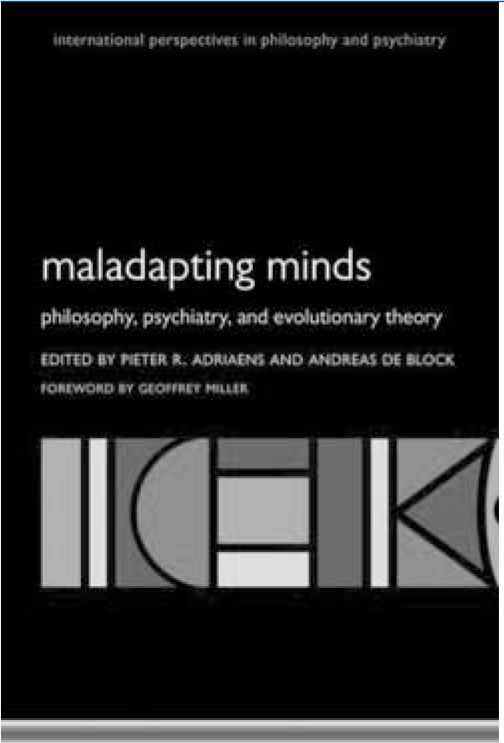
The title of this multi-author text places it as a successor to two now classic texts, one on evolutionary psychology (The Adapted Mind, 1992) and the other on evolutionary psychiatry (The Maladapted Mind, 1997). Although each of these three volumes is by different editors, they have some authors in common, for example Randolf Nesse and John Price.
Compared with evolutionary psychology, which has numerous periodicals and a large following, evolutionary psychiatry is very much the poor relation. There still is not a single peer-reviewed journal worldwide dedicated to evolutionary psychiatry, nor is there, to my knowledge, a single university course that teaches the subject. Hence this publication is to be welcomed.
The book comprises a foreword by Geoffrey Miller, an introductory chapter by the editors and 11 further chapters. Both the foreword and the introduction provide an excellent overview of evolutionary psychiatry as a subject and a useful and informed resume of the rest of the book. The editors raise the pertinent and thorny question of whether evolutionary psychiatry is ‘good science’. Given that one of the book's aims is to explore the philosophical aspects of psychiatry and evolutionary theory, and given the scepticism that psychiatrists have shown towards this new discipline, it is helpful to frame the question in this manner.
The book's contributors’ views differ, at times diametrically so. Unusually for a book on evolutionary psychiatry, there are two chapters that present arguments critical of the Darwinian approach. The authors of one of these chapters are critical of the whole adaptational paradigm that attempts to identify function and dysfunction from an evolutionary standpoint, preferring instead the mechanistic breakdown model prevalent in the rest of medicine where function is considered to be designed to keep a given system in homeostasis. Although I applaud the authors for giving space to critics of some of the prevailing theories in evolutionary psychiatry (specifically Marks and Nesse's theory on anxiety and phobia), in the light of disconfirming evidence I would question the appropriateness of publishing the anti-Darwinian analysis in this kind of book when it could have found a place elsewhere, in any number of publications critical of the evolutionary approach to psychiatry.
The heart of the book is in the chapters that deal with the major conceptual questions. These include the role of ethology in understanding mental disorder and in identifying human, species-specific psychological traits. There is a chapter evaluating an evolutionary framework for determining the nature of mental disorder through the application of Wakefield's harmful dysfunction analysis and one proposing evolutionary foundations for psychiatric diagnosis and a new basis for psychiatric classification. Finally, there is a chapter exploring the limitations of evolutionary theory in identifying the line of demarcation between normality and disorder. These chapters would be of interest to any reader who wishes to reflect on the meaning of mental disorder and on the shortcomings and limitations of current psychiatric diagnosis, whether or not they have an interest in Darwinian theory. These chapters are very well written and are accessible to the non-specialist.
A further chapter presents an interesting hypothesis to explain the gender differences in empathy that lie at the root of the higher prevalence of autism-spectrum disorders among males. This proposes that in the ancestral environment males remained with their kin group (philopatry) forming kin-based male coalitions, whereas females migrated on sexual maturity to a different group and thus needed to bond with non-kin. Additionally, males regularly engaged in intergroup violence whereby empathy had to be ‘switched off’. It is therefore argued that the pay-offs of empathy were drastically different for males and females and they were, therefore, subject to distinct selection pressures. Evolutionary formulations on depression, schizophrenia and sexual imprinting in humans are also discussed.
This is not an introductory text for anyone new to the subject of evolutionary psychiatry, nor is it a book that one would necessarily read from cover to cover in a single sitting. Each chapter is self-contained and can be read separately without reference to the rest of the book. Would I recommend it? Yes, I certainly would. So long as the reader remembers that not all chapters are of equal worth or quality.





eLetters
No eLetters have been published for this article.